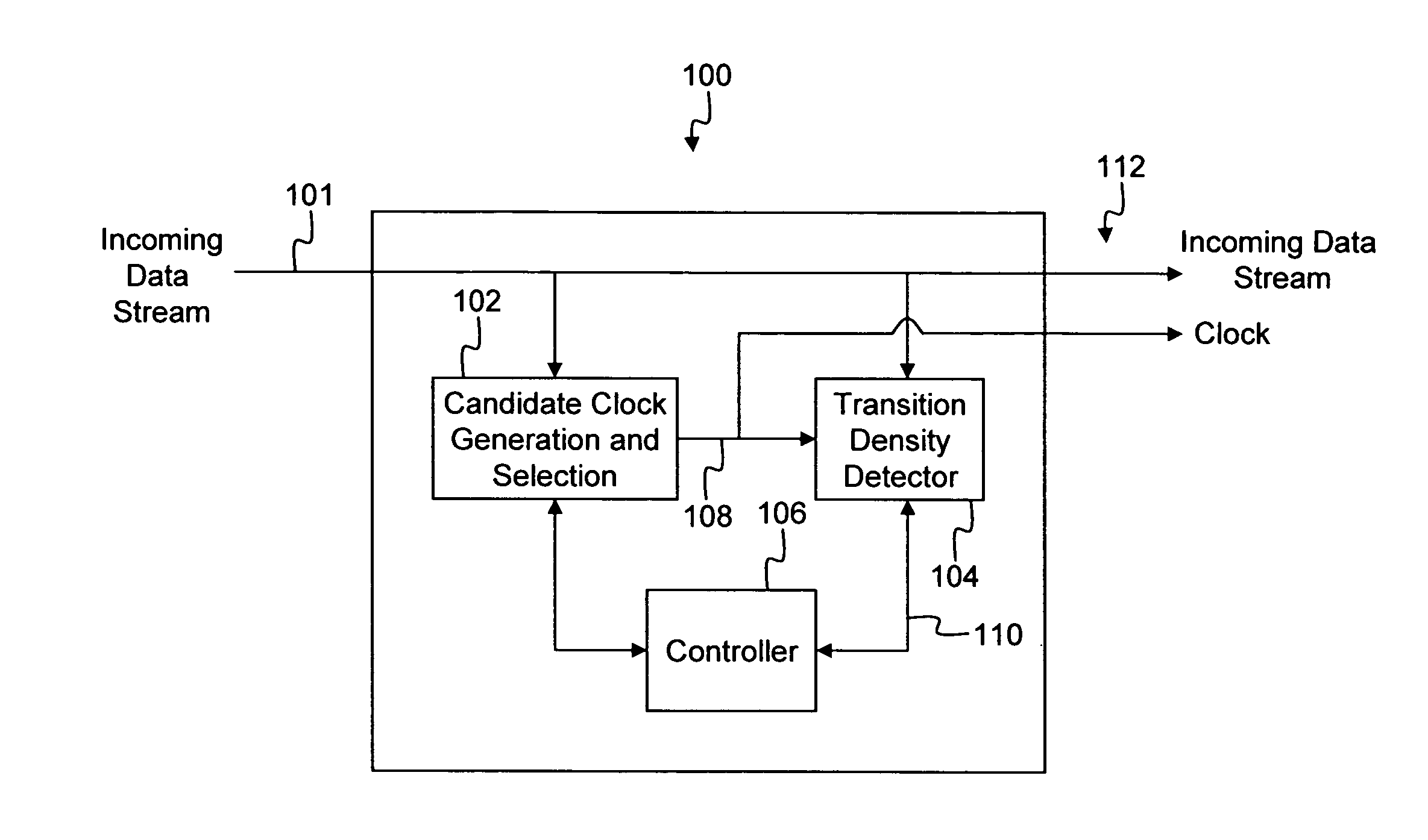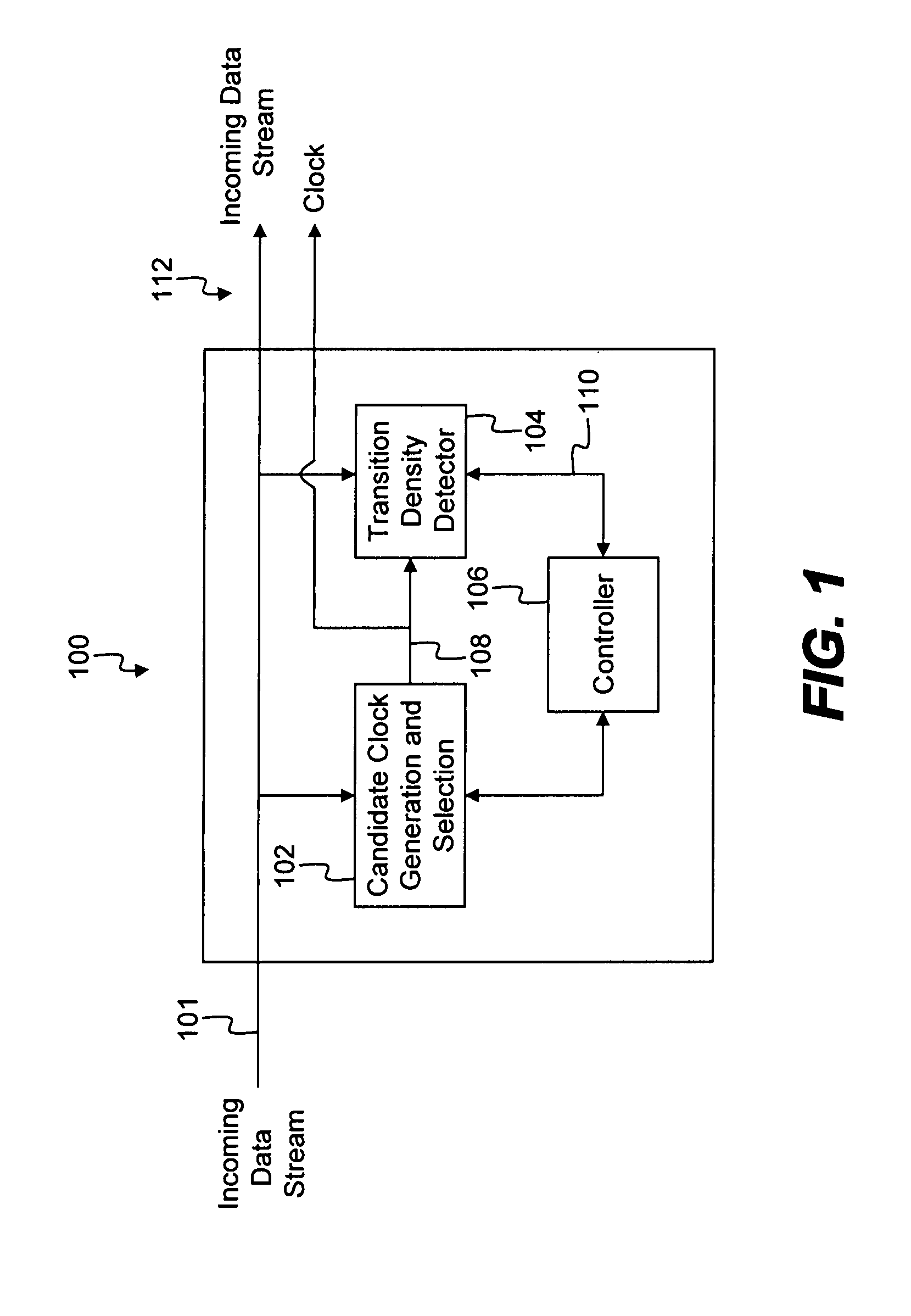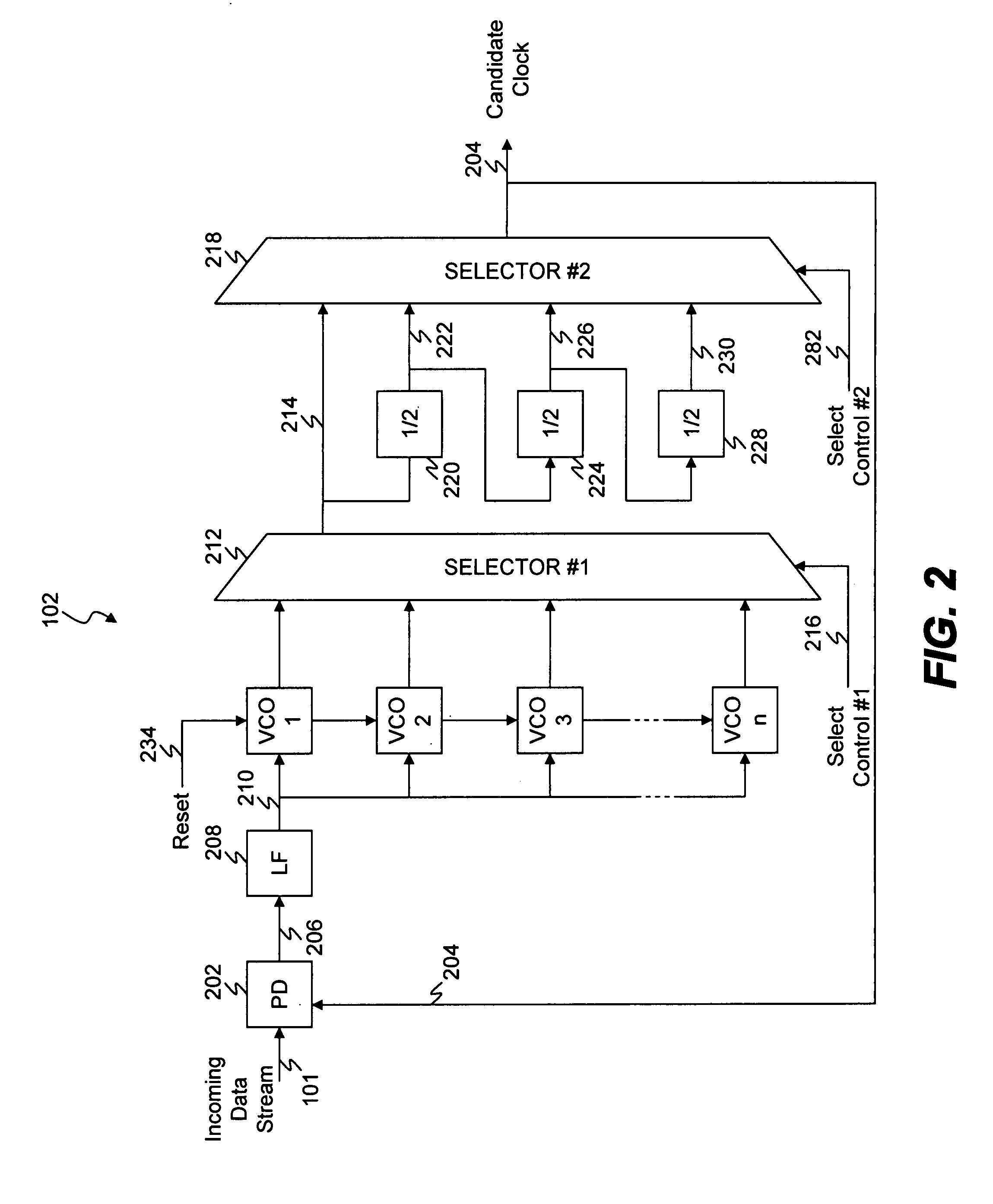System for clock and data recovery
a clock and data recovery technology, applied in the field of data receivers, can solve the problem that the clock recovery occurs without prior knowledge of the expected data rate, and achieve the effect of high accuracy and no errors
- Summary
- Abstract
- Description
- Claims
- Application Information
AI Technical Summary
Benefits of technology
Problems solved by technology
Method used
Image
Examples
Embodiment Construction
[0019]The present invention includes a system for determining an optimal clock to associate with a received data stream. For example, in a system where the received data stream is not accompanied by synchronizing clock signal, the system operates to process the received data stream to generate candidate clock signals and select the optimal candidate clock to use to further process the incoming data stream. Thus, various embodiments of the system included in the present invention are discussed in detail in the following text.
EXEMPLARY EMBODIMENT
[0020]FIG. 1 shows an overview of a system 100 for clock recovery constructed in accordance with the present invention. The system 100 receives as input a data stream 101 that does not have a corresponding clock signal. For example, the input data stream may be encoded in an NRZ format so that only a signal data stream is received.
[0021]The system 100 includes candidate clock generation and selection logic 102, transition detector logic 104 an...
PUM
 Login to View More
Login to View More Abstract
Description
Claims
Application Information
 Login to View More
Login to View More - R&D
- Intellectual Property
- Life Sciences
- Materials
- Tech Scout
- Unparalleled Data Quality
- Higher Quality Content
- 60% Fewer Hallucinations
Browse by: Latest US Patents, China's latest patents, Technical Efficacy Thesaurus, Application Domain, Technology Topic, Popular Technical Reports.
© 2025 PatSnap. All rights reserved.Legal|Privacy policy|Modern Slavery Act Transparency Statement|Sitemap|About US| Contact US: help@patsnap.com



